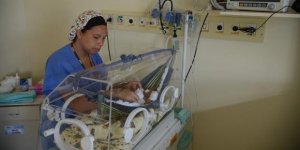| Health / Health News |
Common Household Chemicals Lead to Birth Defects in Mice
A connection between common household chemicals and birth defects has been uncovered by new research.

Common household chemicals lead to birth defects. ![]()
A new study at the Edward Via College of Osteopathic Medicine (VCOM) and the Virginia-Maryland College of Veterinary Medicine at Virginia Tech has found a connection between common household chemicals and birth defects.
Known as quaternary ammonium compounds or "quats," the chemicals are often used as disinfectants and preservatives in household and personal products such as cleaners, laundry detergent, fabric softener, shampoo and conditioner, and eye drops.
The research demonstrated a link between quats and neural tube birth defects in both mice and rats.
The team investigated the effect of two commonly used quats: alkyl dimethyl benzyl ammonium chloride and didecyl dimethyl ammonium chloride. These are often listed on ingredient lists as ADBAC and DDAC, respectively, and are valued for their antimicrobial and antistatic properties, as well as their ability to lower surface tension.
Hrubec found that exposure to these chemicals resulted in neural tube birth defects -- the same birth defect as spina bifida and anencephaly in humans.
Mice and rats did not even need to be dosed with the chemicals to see the effect. The research shows that simply using quat-based cleaners in the same room as the mice was enough to cause birth defects. They observed increased birth defects in rodents for two generations after stopping exposure.
An earlier study found that these chemicals led to reproductive declines in mice. Follow-up research found that quats were decreasing sperm counts in males and ovulation in females. The research raises the possibility of quats contributing to human infertility, which has been on the rise in recent decades.
Quaternary ammonium compounds were introduced in the 1950s and 1960s before the standardization of toxicity studies. Chemical manufacturers conducted some toxicity studies on the compounds during this period, but they were never published.
An epidemiological study could determine whether people who have a high rate of exposure, such as healthcare workers or restaurant servers, have a more difficult time becoming pregnant or have a greater likelihood of having children with neural tube birth defects, but no such study has been conducted to date. (Tasnim News Agency)
YOU MAY ALSO LIKE




